Sunday, June 29, 2008
Indigos
The term "Indigo" was first used by Nancy Ann Tappe, a psychic and synesthete, in her 1982 book Understanding Your Life Through Color. Ms. Tappe claimed to be able to read people's auras, which is not an uncommon claim amongst both New Agers and Pagans/Wiccans alike. Ms. Tappe not only reads auras, but she classifies people's personalities based on the colors of their auras.
In the 1970s she wrote that she noticed a lot of children were being born with indigo auras. Today she estimates that 60 percent of people age 14 to 25 and 97 percent of children under ten are "Indigo". In 1998 another book that deal with Indigo children was written by Lee Carroll and Jan Tober, a husband-and-wife team. They took the idea of the Indigo child and ran with it, with Carroll claiming he learned about the concept of indigo children while channeling a being known as Kryon.
According to New Age belief, Indigos are characterized by a clear sense of self-definition and a sense that they must do something to make a difference in the world. They are highly sensitive, independent thinkers who prefer to follow their own path rather than comply with authority. (That sounds like most children to me.) Supposedly Indigos are also empaths, very in tune to the thoughts and feelings of others. They are also naturally drawn to the paranormal and occult. This is what leads many New Agers and Pagans to believe they are Adult Indigos, or that their children are Indigos, even if the belief in the occult is actually their parents' and not their own.
Some believe that children who are diagnosed as having ADD or ADHD are actually Indigos. Other disorders such as Autism and Obsessive-Compulsive Disorder are also associated with Indigos. "Experts" state that children who are misdiagnosed as hyperactive or autistic have social problems simply because they are not in the company of other Indigos.
Children and adults are both highly susceptible to suggestion, and some believe that the Indigo phenomenon can be attributed to an overexposure to books and television programs that deal with fantasy, magic, and New Age ideas. One such example comes from an article from the Dallas Observer. A reporter for the newspaper followed an interview between a man who purportedly works with Indigos and a child who was reputed to be one.
The child, named Dusk (how I wish that were a pseudonym!), was asked if he were an Indigo. He replied, "I'm an avatar. "I can recognize the four elements of earth, wind, water and fire. The next avatar won't come for 100 years." The man was impressed and intrigued. He was also completely unaware that Dusk's response came from the storyline of a Nickelodeon cartoon entitled Avatar: The Last Air Bender. Oops.
How do you recognize an Indigo child if you aren't one of the gifted people who can see auras? Well, fortunately there are several websites that happily provide characteristics of an Indigo, or questions you can ask yourself to see if you or your child is one of the special, the chosen.
Some examples:
They come into the world with a feeling of royalty (and often act like it)
They have a feeling of "deserving to be here," and are surprised when others don't share that.
Self-worth is not a big issue. They often tell the parents "who they are."
They have difficulty with absolute authority (authority without explanation or choice).
They simply will not do certain things; for example, waiting in line is difficult for them.
They get frustrated with systems that are ritually oriented and don't require creative thought.
Does this sound like you or someone you know?
How about this:
Are you always searching for your greater purpose in life but feel like the world isn't set up for your kind?
Do you sometimes feel wise beyond your years?
Do you have trouble conforming to the ways of society?
Do you have strong intuition about certain things that most others do not?
Did you have a difficult childhood?
Do you often feel disempowered by too much authority?
Feel free to ask yourself the rest of the questions. You can do so by visiting http://www.namastecafe.com/evolution/indigo/#canyoutell
So, for all of you out there who have been labeled "Emo", for all the Pagans and Wiccans out there who are natural psychics and empaths (and aren't you all?), and for anyone whose childhood wasn't all sunshine and lollipops or for anyone who doesn't like to be told what to do, you have an excuse now. You're an Indigo. You're special. You don't have to conform to the rules of society and do mundane things like hold down a steady job, respect authority figures, or exercise any self control or personal responsibility. If anyone questions you, just tell them,"I'm an Indigo" and leave them scratching their heads while you go off to socialize with your Indigo buddies. You can all hang out in front of the 7-11 and be mystical and otherworldly. I'll be in my office, earning a paycheck, (pretending) to obey the rules, and pondering a future full of Indigos.
Monday, June 16, 2008
Karma
Through the law of karma, the effects of all deeds actively create past, present, and future experiences, thus making one responsible for one's own life, and the pain and joy it brings to him/her and others (source: en.wikipedia.org/wiki/Karma).
Pagans and Wiccans have their own views of karma. Wiccans believe that everything you send out comes back to you times three. However, many Pagans and Wiccans only apply this law to people who have upset them.
When they feel wronged, slighted, or persecuted, some just sniff and say,"Well, that will come back on so-and-so times three!" and perhaps they add a "So Mote it Be!" just to make darn sure.
Is Karma a bitch? Yeah, kinda. Can we control it? Not so much. If you do shitty things to people, do shitty things happen to you? Yes, but that doesn't necessarily mean it's karma. No one knows how long it takes for us to get what's coming to us, but we do, eventually. Don't think you control it, babies. You can't decide who gets what, or when. If you try to control the universe, rest assured it will blow up in your face.
Sit down and hold on tight, kids. It's a bumpy ride.
Sunday, June 15, 2008
The drums

Now, on to the most commonly used drums. I accidentally omitted the doumbek in the previous entry, so I will start with it this time.
The doumbek is a goblet-shaped hand drum used mainly in Arabic, Turkish, Persian, Balkan, Greek, Armenian, and Azeri music. Because of its Middle Eastern origin, it is a favorite of belly dancers, or Pagan women who belly dance because it's just something Pagan women do. I mean, because it strengthens their connection to the Mother Goddess. It certainly isn't an excuse to wear a lot of clinking jewelry and swirly skirts!
The bodhrán is, of course, an Irish frame drum. There is evidence that the bodhrán was used in battle in 1603, during the Irish Rebellion. It has also been used to provide a cadence to pipers and warriors. This has lead many to believe that the bodhrán was derived from a Celtic war drum. This strikes a very special cord in the hearts of many Pagans, who have Irish or Scottish heritage they wish to explore. Being Pagan AND playing a bodhrán is, for some, an especially strong connection to one's roots. Bodhráns don't always fit in at drum circles because of their unique sound. It's hard to play those "doum tekka tekka tekka doum" rhythms that the dancers crave. It may be fine for step dancing, but step dancing is rarely done around a bonfire. It's more of a daytime activity. There's too much danger in tripping over a root or stone in the dark.
The djembe is the king of the drum circle. This drum is from Western Africa and is said to contain three spirits: the spirit of the tree that provided the wood, the spirit of the animal whose skin provided the drum head, and that of the instrument maker. Most of the drums used in drum circles will be djembes because they have the deepest sound, the one that sounds most like the heartbeat of the planet. Plus it's the loudest, and if you can't play well, play LOUD! Er, loudly.
Drum Circles

Most major Pagan events, gatherings, Pride Day celebrations and any other meeting of like-minded people have a drum circle. Sometime it's completely spontaneous, but there are loosely organized groups of people who meet on a regular basis to drum. Pagan gatherings usually have drumming workshops, a vain attempt at teaching rhythm to those who don't have any. You will also likely come across several vendors who are selling a variety of drums. For a few dollars you can get a cheap, flat-sounding plastic drum decorated with a triple moon or the Venus of Willendorf, or you can purchase a handcrafted djembe that costs several hundred dollars. (Djembes are the most popular choice, followed by the bodhran. We'll talk about each of those in turn.)
People get together to drum for various reasons, but for many Pagans, the focus is to raise energy, although the type usually is not specified. At Pagan gatherings, this is likely to take place at night, around a large bonfire. The drummers sit or stand in one place while others are free to move about the circle. Belly dancing is another very popular bonfire activity and dancers are almost always present at such circles.
What is the attraction? Drumming has been used as a spiritual tool by people of various paths. In many shamanic cultures, it is the rhythmic, hypnotic beating of the drum that carries the person into an altered state of being. It's the South American spiritualities that use more colorful methods, such as ayahuasca to achieve a similar state. Those who use drumming to induce a higher consciousness believe that the sound of the drum closely matches the base frequency of the earth itself. Some refer to the sound of the drum as the heartbeat of Mother Earth.
There are a few Pagans who claim to have profoundly spiritual experiences during drum circles, and some dancers have become so involved in what they were doing that have suffered dehydration and nasty sunburn-like injuries. If you're going to attend a drum circle, try to remember to take frequent water breaks, and don't get so damn close to the fire! (Oh, and please don't wear anything with big sleeves. We know how some Pagans like to dress as though they are at the Ren Faire.)
Many Pagans attend drum circles to show off their drumming skills, both real and imagined. Drumming makes all of the nine-to-fivers (and there really are some who do work a "typical" job) feel more in touch with their primitive selves. It gives these modern-day primitives a chance to change out of their mundane costumes and step out of the air-conditioned office (or trailer) and stomp, clap, shout, and make a holy racket until dawn. It's not uncommon to hear 17 rhythms happening at once. Someone will try to establish a beat, but instead of following it, everyone else decides to improvise. This makes it difficult for the dancers to try to out-shimmy each other. It almost makes it impossible to hear anyone sharing a song or a bit of the spoken word, which makes loud, chaotic drumming almost a blessing.
Wednesday, June 11, 2008
Flakey Pagans in the News
Apparently Mr. and Mrs. MacPebbles are not happy because someone complained about the pentacle and runes they had painted on their fence. Check out Mr. MacP's killer tat.
And we wonder why some people don't take us seriously.
Saturday, June 7, 2008
All Things Native American
 Many Pagans like to claim not only Celtic heritage, but also Native American heritage. Even those who do not claim any heritage still enjoy picking and choosing and adapting the beliefs of some N.A. people to suit their own practices.
Many Pagans like to claim not only Celtic heritage, but also Native American heritage. Even those who do not claim any heritage still enjoy picking and choosing and adapting the beliefs of some N.A. people to suit their own practices.Some examples of this are the Medicine Wheel, sweat lodges, vision quests, and totem animals. The Medicine Wheel is symbol for the wheel of life. It involves the four cardinal directions and four sacred colors, which resonates with circle-casting Pagans and Wiccans.
Medicine wheels are constructed by laying stones in a particular pattern on the ground. Most medicine wheels follow the basic pattern of having a center of stone(s), and surrounding that is an outer ring of stones with "spokes", or lines of rocks radiating from the center. Originally, and still today, medicine wheels are stone structures constructed by certain indigenous peoples (that would be Native Americans, or American Indians, if you prefer) of North America for various astronomical, ritual, healing, and teaching purposes. More recently, syncretic, hybridized uses of medicine wheels, magic circles, and mandala sacred technology have been employed in New Age, Wiccan, Pagan, and various other communities and spiritual paths throughout the world.
Another popular tradition that has been adopted is the sweat lodge. The sweat lodge is a ceremonial sauna and an important ritual used by various peoples of North America. The Lakota ritual seems to be the most common. Basically, stones are heated in a fire. A dome-like shelter is constructed. Participants sit around a pit and rocks are brought in and water is poured of them. The rituals and traditions vary from tribe to tribe. Some sweats are silent, while others involve singing and praying. For more information, please visit http://en.wikipedia.org/wiki/Sweat_lodge.
Somewhere along the way people got the message that being eclectic meant borrowing a little bit of this and a little bit of that from various spiritual paths, and weaving them into something very stylized and very personal, into something from which the original parts could not be distinguished.
The use of various N.A. traditions by non-native peoples is very controversial. I won't go into my personal opinion of using most of these traditions, but you can probably guess my position. If it is done with respect and a lot of studying, and it involves someone who actually knows what the heck is going on, it can be fine. Unfortunately we run into a lot of people who claim to be 0.64273411 percent Cherokee or Lakota (this are currently the most commonly claimed) and consider themselves an expert on the ways of ‘their people'. It can get embarrassing.
Dream catchers are quite popular in the Pagan/Wiccan community and can be purchased at pretty much any New Age shop. People whose spiritual paths are heavily influenced by N.A. peoples tend to wear t-shirts with wolves on them, bear fetish necklaces, leather vests, and bead-and-feather hair ornaments. . They usually take a name that has "Wolf", "Bear" or "Eagle" in it. It can be even harder to dance to their drumming than to the other bardic circle musicians'.
Reiki

Reiki: Rei - spirit , ki - life force.
Reiki is a Japanese technique for stress reduction and healing. It is administered by the "laying on hands" and is based on the idea that the universal life force will flow through the person, through his or her hands, and into the body of the person who is receiving treatment. The healer acts as the channel for this energy, and helps direct it. It is believed that if our life force energy is slow, we become more susceptible to illness, and if the energy is high, we can be happier and healthier.
Supporters of Reiki claim that it is useful in treating every known ailment, and can be used in conjunction with more Western treatments. Reiki is also a very popular subject in the Pagan community. Many Pagans/Wiccans/Witches are interested in healing, so there is a fair amount of interest in Reiki, herbs, and holistic health. In fact, you can find practitioners of Reiki and sometimes even workshops at your friendly local Pagan gathering or festival.
Reiki takes some studying. Unfortunately there is no "instant Reiki master or "natural"/family trad master. When one decides to study Reiki, one must memorize a series of points on the body, their correspondences, and proper hand positions. The hand positions themselves are simple enough, but the practitioner must have the discipline to actually focus on the task at hand.
Receiving attunements is how one trains and eventually becomes a master, giving one the freedom to train others. Now, if this divine life force energy is around us and in us at all times, don't we all have the ability to use it? Apparently not. Instead, one must receive the attunements from a master. There are three levels, each one costing a bit more than the last. Cost? Yes, these attunements cost hundreds of dollars.
To be honest, I don't tink all practitioners of Reiki have gone through all of the levels and paid someone else a few hundred dollars to attune them to this energy. It is very likely that many people simply visit websites such as http://reiki.7gen.com/index.html, practice the hand positions, and voila! A Reiki master is born!
Some Pagans and Wiccans are interested in Reiki as a means of adding to their cache of mystical powers. Others truly want to help alleviate other people's suffering and have studied Reiki in addition to other alternative methods of healing. Whatever the motivation, if you are amongst a group of Pagans and someone mentions a headache, toothache, ingrown toenail, athlete's foot, or any other malady, be sure to ask them if they have tried Reiki. This could lead to an impromptu discussion or, if you're really lucky, a demonstration! Just hope they don't ask you to demonstrate unless you've done your homework.
Psychic Abilities and Being Under Psychic Attack
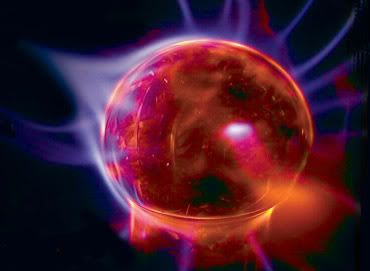
Did you know that we all have psychic abilities? It’s true. Every one of us is psychic. Only a few of us, however, have bothered to tap into and develop those abilities. All Pagans are psychic. Some of them can remember being psychic as children, while others realized their psychic powers soon after embarking on their personal spiritual journey.
Being in touch with your psychic abilities isn’t only a wonderful way to impress your friends, it’s also a great way to gain respect in the eyes of your Pagan peers. Many of them will be much more powerful than you, however, so be prepared for people to look down their noses at you and call your powers “cute”. Don’t be afraid to embellish your accomplishments slightly, but only slightly. They can read your mind, you know…
Being psychic has some disadvantages. For one thing, a lot of psychics were tortured and murdered during The Burning Times, or so many people believe. Also, there is a chance that some of your friends will be jealous and start to resent your gift(not that you would use it to show off, of course!). But, most important is the chance that one day you will come under PSYCHIC ATTACK. The very name strikes terror into your heart, doesn’t it? Attack in a form that you cannot see or hear, attack that can happen at any time.
A psychic attack is defined as the manipulation of supernatural energies and forces. These energies are sent from one individual to another, creating disturbances in the energy fields and physical body of the person who is being attacked. This energy is sometimes called a spirit, demon, entity, or negative thought form.
Psychic attack is often the mark of a new Pagan. Many new Pagans are constantly under psychic attack, especially by people with whom they are arguing. During the attack, the victim is usually able to catch a glimpse into the mind of the attack and see just how evil s/he really is. This is especially helpful if said person has a higher position or is more important in the coven than you. It is also a really great way to get attention, and some people seem to relish the idea of being under psychic attack. In fact, it’s all they can talk about.
Some Pagans, however, are on the other side of the fence. They firmly believe that they are capable of summoning entities and sending them out to psychically attack (or counter-attack) their enemies. It is amazing how many people have the ability to send out demons or animals or some other entity to their enemies.
The internet is full of websites made by people who claim to have summoned demons and sent them forth to attack those who pissed them off. Aleister Crowley was one who claimed to send demons and the like to attack enemies. He was later believe to be full of shit.
So, if you experience what you believe to be more than your fair share of flat tires, broken heels, snagged stockings, or if you lose your keys or the cleaners can’t get the Frappuccino stain out of your jacket, are you under psychic attack? No. If your house burns down, your spouse leaves you, someone steals your identity, and your cat develops chronic diarrhea, are you under psychic attack? Well, maybe if all that shit happens to you…but probably not. But chances are you aren’t. Even if people can send enough negative, hateful energy to someone to actually effect them, most people don’t have that kind of time or motivation.
So if you are extremely desperate for attention, you can chalk things up to psychic attack. Just be sure you accuse the right person. Also, if you you still insist that you are under psychic attack, I suggest you find some information on shielding, unless of course you’re the aforementioned person. The internet is full of websites that contain information on shielding. Just remember that the internet is also full of people who want to sell you crystals, charms, candles, oils and various other bits and pieces, not because they want to help you, but because they need to make money, but that’s another entry. Whatever you find, your belief in it is what is going to make it succeed or fail.
Totem Animals and Spirit Guides
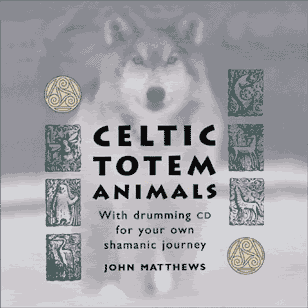
A lot of Pagans like to rip off beliefs of various American Indian tribes and rework them to suit their needs. Or perhaps they just read The Clan of the Cave Bear one too many times. Either way, a lot of Pagans believe in totem animals or animal spirit guides.
Many Shamanic cultures believe in animal guides or helpers. These are animals that communicate with the shaman, or in some cases, the shaman supposedly turns into his power animal. Some Pagans like to believe they are shamans, many without actually understand precisely what that entails. (The use of special ’shamanic’ plants sometimes helps that belief. )
Apparently it’s quite easy to meet one’s animal spirit. Did you know that even Christians have totem animals? Yep, apparently the fish and the lamb are the totem animals for Christianity, at least according to http://www.crystalinks.com/poweranimals.html. This site also has helpful tips on meeting your power animal. Don’t worry if you don’t connect with the same animal consistently during your meditations! It seems we can have several.
Why, even the Celts had power animals, and we all know how much Pagans love all things Celtic.
http://www.joellessacredgrove.com/Celtic/animalallies.html Here is an excerpt of a book on Celtic Shamanism. It gets bonus points for also giving us the Gaelic names of these animals, including everyone’s favorite, the Unicorn (Briahbhall).
If you’re going to choose a power animal (excuse me, if the animal is going to choose YOU), can it please be a real animal? Please? Oh, and I should probably mention that no matter how much you like your chosen animal, you’re still human. You’re not part white tiger, or some other ferocious beast. Nor are you part dragon. I’m sorry, but you’re just not, okay?
There’s nothing wrong with believing in a power animal or totem, especially if you do your research and actually know what you’re talking about. Some of the writings on these beliefs is quite interesting, but not all of it is practical. If you have problems with self-esteem or anxiety and your totem animal can help you overcome that, that’s great. But it’s not a contest to see who can have the most bad-ass totem either. Again, this ain’t the Clan of the Cave Bear, Darryl Hannah.
A lot of people who take what they want from American Indians are usually “chosen” by the buffalo, wolf, or bear. The buffalo is the one I have encountered the most. It seems there is a whole herd of them running around here somewhere.
People are also very fond of having their animals tattooed on their bodies, or just merely adorning a t-shirt or necklace. Mark yourself however you see fit, you modern primitive, you.
Oh, and do I have a totem animal? Perhaps, but I certainly don’t claim to be a shaman. It's a term that gets thrown around way too much in the community.
Talking About the Burning Times

Many Pagans/Wiccans/Witches love to talk about The Burning Times. Actually, many of them probably just like the “Never Again the Burning Times” graphics and enjoy spouting that slogan, especially when they feel they are being “persecuted” for their beliefs. Many Witches/Wiccans/Pagans, etc. perceive any objections to their beliefs as a “Witch Hunt”, and for the most part, that is just not true. Most people really don’t care.
What we know as The Burning Times began in the thirteenth century and reached its peak in the pobably around the sixteenth century. During this period of history, the established Church committed horrible atrocities against people who were suspected of witchcraft. These people, however, were not Wiccans, as Wicca didn’t come along until the 1950s. In fact, the majority of people who were tortured and murdered at this time were, in fact, Christians.
Many of these people were outcasts, people who were a bit “strange”, and most were women. Woman were considered far more susceptible to the Devil’s wiles and sweet talk, being so much weaker of mind and character than men. This knowledge is what lead some people to believe that those killed during this time were practitioners of an older, earth-based, Goddess-centric religion. The truth is, however, that most of the people were Christians. They were persecuted by their fellow “Christians”, accused of being in league with the devil, tortured, and killed. Why? Well, people were dying by the hundreds of thousands. There were wars and the Black Death. What could cause such an evil to overtake humanity? It certainly couldn’t be lack of cleanliness! So a suitable scapegoat was sought - the Witch. The Witch, who is sold her soul to the devil and practices profane rites and gruesome sacrifices must be the reason so many people are dying, right?
This witch hunt had nothing to do with paganism. Catholics accused Protestants. Protestants accused Catholics. Sure, there were some non-Christians involved, but we’ve already established that they were not Wiccan.
So, let’s recap, shall we? Yes, religion was a factor in these Witch Hunts, but the majority of people were Christians (and no, I am not going to argue with people who say those people were just pretending to be Christians, but were in fact Pagans). Europeans needed a scapegoat, someone to blame for the death that was going on around them. People were not as educated at the time, and superstitions got the best of them. They decided Satan-worshiping Witches were to blame. Honestly, if you were a Christian in the thirteenth century, wouldn’t that make as much sense as anything else? It was simply the worst thing they could think of. Men, women and children were killed. So were a bunch of cats. In Salem, no one was burned. People accused of witchcraft were hanged. Also, property was one of the factors at Salem.
So, if you are new to the whole Pagan path, please do some research. Don’t just go around talking about how “your people” were slaughtered during The Burning Times. Hardly anything marks a wide-eyed, uneducated novice more than remarks like that. It didn’t happen, people. No Wiccans were harmed during this period of time, or in the writing of this article.
If you feel like doing some research, here are a few sites:
http://wicca.timerift.net/burning.shtml
http://www.spotlightministries.org.uk/burningtimes.htm (Yes, a Christian site. Just read it.)
http://www.religioustolerance.org/wic_burn.htm
Crystals
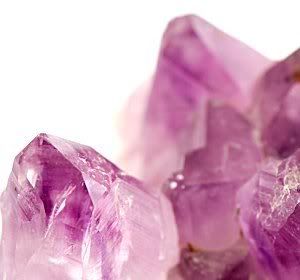
What Pagan or Wiccan doesn’t like crystals and stones? What the heck are these crystals, anyway? And what good does carrying around a bunch of rocks do?
Well, crystals are solids that form by a regular repeated pattern of molecules connecting together. They grow in different patterns and come in a variety of colors, which is affected by the absorption of light by the molecules.
Okay, so what does this have to do with Pagans? Well, many believe that the array of crystal structures and patterns, varied though they may be, follow something known as Sacred Geometry. (http://www.crystalinks.com/sacred_geometry.html)
According to crystal believers, each type of crystal has its own energy and vibrations. These can help us do everything from attract money and love, to protection (both physical and psychic, we presume).
Amethyst and rose quartz are two favorites. Rose quartz is the favorite crystal for attracting love or healing a broken heart. “Experts” recommend sleeping with a new crystal (to allow your energies to mingle), holding them during meditation, applying them to the chakras, and so on.
Amethyst is thought to provide courage and protection. It is also believe to improve one’s psychic abilities, which we apparently all have, but most of us have not bothered to wear crystals and develop those abilities.
Crystals are found in rings, bracelets, necklaces, and headdresses. They are sometimes prominent features on a person’s altar as well. Give a Pagan a crystal with the message, “This stone was just calling your name!”, and you will certainly gain some Brownie points with him/her.
Belly dance
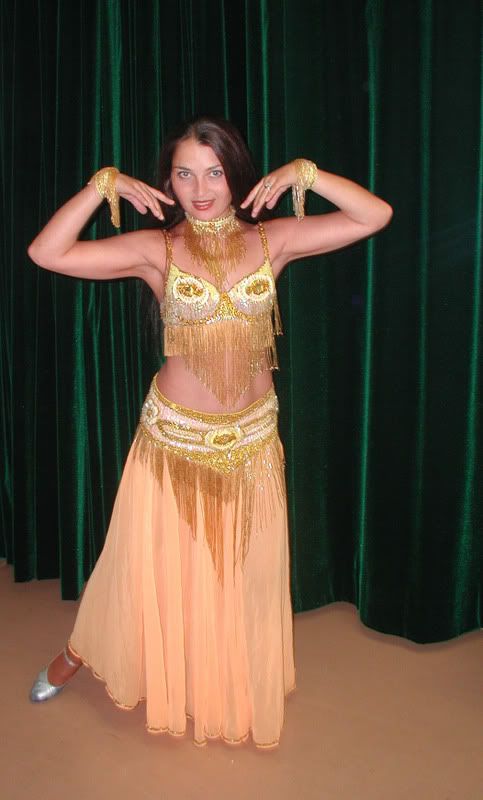
It is not only impossible to have a drumming circle without a group of aspiring bellydancers, but it is also illegal in some areas. That’s the way it seems sometimes. Pagan women love to belly dance. They claim it is for women of all sizes, but honestly, how many performers have you seen shake anything over a size 6?
Bellydance, we are lead to believe, is an ancient tradition dating back to Phonecia, Sumeria, Mesopotamia, and other areas that are just as forgettable (after ninth-grade history, at least). Women did this dance to ease the pain of menstruation and childbirth, and also as a celebration of the feminine form.
What it means today is people charging an exorbitant amount of money for classes, DVDs, and cheaply made polyester costumes with genuine imitation ancient coins sewn along the hem. Go to any drumming/dancing get together and you will see small groups of women, young and old, thin and fat, shimmying before an appreciative (they hope!) audience. And you can hear them coming before they arrive, weighed down by so much Afghani Kuchi jewelry it’s a wonder they can bend over without falling on their faces.
Still, it can be good exercise, and it can be fun. Some of the music is quite nice. It’s also nice to see people of all ages and sizes engaging in this activity. There are many amply-built Pagans in the community, and it’s nice to see people of all sizes being more accepted.
Faeries
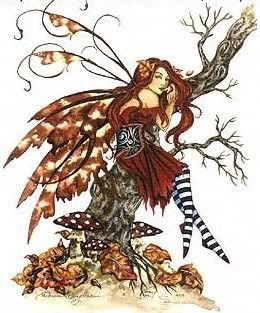
Pagan folk love fairies, or, as many of them will correct you, “faeries”. Go to a Faery Festival, fantasy convention, or anywhere Brian Froud is expected, and chances are many of the people there will be Pagan.
Why the fascination with these mythical creatures? Well, first of all, some Pagans will insist that faeries are just as real as you or I. In fact, they probably know a few! The Faery Wicca tradition seems to be gaining popularity, although what all this entails your author is not 100% certain. Having very little interest in faeries myself, I have not checked out all of the faery-related traditions.
I will say, however, that I used to have a Faery Wicca tarot book and deck set. The cards were illustrated in dark reds and lush greens, and came complete with Gaelic names most people cannot pronounce. These cards, then, contained several elements that many Pagans find irresistable.
Many Pagans will decorate their cars, homes, clothing and bodies with representation of these tiny winged beings. Some people even build special faery houses to attract more of the fae (or, if you really awnt to show off your knowledge of Gaelic, ’sidhe’). Amy Brown and Brian Froud are two artists who are currently making a killing from this trend, selling thousands of books, figurines, t-shirts, and other assorted merchandise. Kudos to them!
Celtic Designs
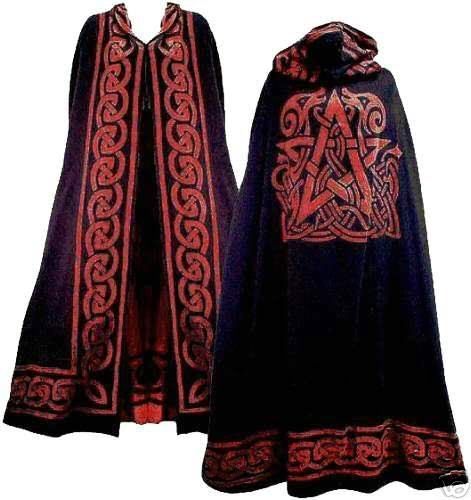
Pagans love Celtic designs - knotwork, stylized designs of real or fantasy animals, you name it. They adorn their bodies with Celtic crosses, pentacles surrounded by knotwork, triskeles, and any number of other designs. If you go to a festival you will be sure to see numerous vendors all selling giant bedspreads/sarongs/altar cloths with fanciful Celtic designs. You will also see a plethora of necklaces, earrings, t-shirt, purses, rings, bracelets, skirts, etc., all covered in these designs.
Many Pagans embrace their Irish and Scottish heritage (both real and imagined) and seek a way of showing the world, ‘Hey, I’m a real Celt here! See my cloak?’
If you’re going to be attending your first open circle or ritual or first Witches MeetUp, wearing a simple t-shirt with a Celtic design (bonus if the shirt also features dragons or other mythical critter), or perhaps just a necklace will be enough to help your new friends identify you. Then the next time you meet, you can show off the floor-length rayon cloak you got from MysticMoons, Inc. for $29.95.
Stuff Pagans Like - An Intro to the Blog
I decided to move the blog here to Blogspot because I like the formatting better here.
